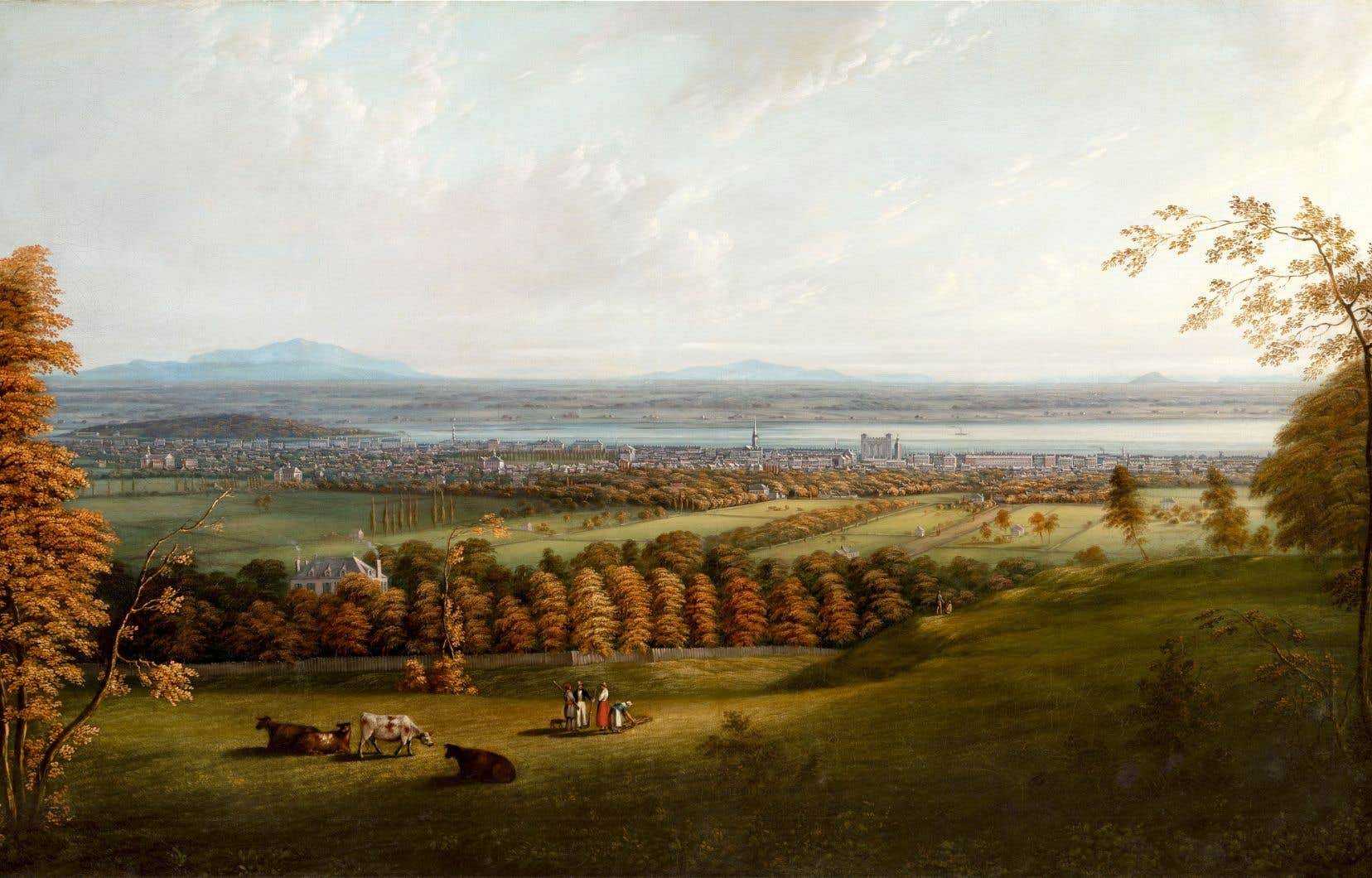It is said that there is no science without patience. The art historian Laurier Lacroix knows something about it, he who sees the culmination of a major exhibition on James Duncan (1806-1881) more than forty years after having imagined it.
Mr. Lacroix was working as a curator at the Montreal Museum of Fine Arts in the late 1970s when he had the idea for the retrospective dedicated to the painter and watercolourist, whose panoramas accompanied the great transformation of Montreal in the 19th century.e century. He envisaged a collaboration with other museums in the city. The project never came to fruition, but a curator from the McCord discovered the old correspondence with Mr. Lacroix and relaunched the museological project, which has just been completed.
“We had to be patient, but new online research resources, for example digitized newspapers, have greatly facilitated the work: we couldn’t have done as well forty years ago,” explains Laurier Lacroix, who taught art history at UQAM in recent decades in addition to conducting curatorial work. He has just presented an exhibition on artists’ studios at the Musée d’art de Joliette.
The exhibition co-directed by McCord curator Christian Vachon is entitled Montreal in the making. Duncan, painter of the 19e century. There are around a hundred works produced between 1830 and 1880, a very rich anthology that allows exceptional portraits to be drawn of the city before photography, when it was transformed from a small town of 27,000 inhabitants to the metropolis of the British colony five times more populous. The works collected for the first time come from the exceptional fund of the McCord and seven lending institutions.
The result presented until April 2024 is nothing short of thrilling. In addition, a magnificent illustrated catalog allows you to dive into the fine explanations and socio-historical contextualization of the unique corpus.
James Duncan, born in Northern Ireland, emigrated to Lower Canada at the age of 24, in 1830. The English and Scottish merchant class developed the colony, which would eventually establish itself as one of the jewels of the empire.
To establish himself as a landscape artist and make his talents known, he immediately produced a large oil on canvas now called Montreal from the mountain. The chosen perspective, at the foot of the mountain, shows a succession of cows in a field, wooded areas in autumn, the gray town dominated by the Notre-Dame basilica under construction, the river, then the Montérégiennes under a great American sky.
The following sections group the proposals thematically, here to focus on disasters, festivals or leisure, there to focus on inhabitants, commerce or buildings. Another major creation made in 1848, perhaps even more fabulous than the canvas of 1830, Panoramic View of Montreal, a brown ink wash by Duncan etched on steel by William S. Barnard, captures the city’s exceptional harbor frontage seen from the river. A huge reproduction on a wall of the museum allows you to admire the details.
The richness and diversity of the hanging make it possible to make cross sections in the representations. Winter scenes abound. The means of transport are amazing, with steamboats, train and horses everywhere. The engravings ofHochelaga Depicta (1839), Montreal’s first tourist guide, captured buildings that had disappeared. Indigenous people interfere here and there, always on the sidelines, rarely as the main subject. An unfinished series shows settlers indulging in snowshoe racing, lacrosse, and tobogganing. Did someone say cultural appropriation?
The McCord Museum is probably the most sensitive and active of museums for the decolonization of museum perspectives. The works exhibited and the catalog highlight the colonizing gaze of Duncan, who seeks to “sell” Montreal.
An impression of postcards therefore emerges from the smooth watercolors. The commercial artist worked for the bourgeois, visitors, passing soldiers in the garrison or a prestigious London magazine wishing to follow life in the colony. His panoramas celebrated the city without highlighting the defects of expanding capitalism, the insalubrity, the epidemics, the tensions between the linguistic communities, nor the fate of the members of the First Nations.
There are exceptions. An oil and engravings show the devastation of the July 1852 fire, the worst in the city’s history. A watercolor from the following year illustrates the riot fatally suppressed at the time of the visit of Alessandro Gavazzi, an ex-Italian cleric turned anti-papist.
The Museum completes the very enticing proposal with a multimedia creation commissioned from the digital art studio Iregular. Mind maps uses the artificial intelligence of the XXIe century to compose computer-generated images made of topographic strata and superimposed reliefs inspired by James Duncan, a fabulous portrait painter from Montreal in the 19e century.
